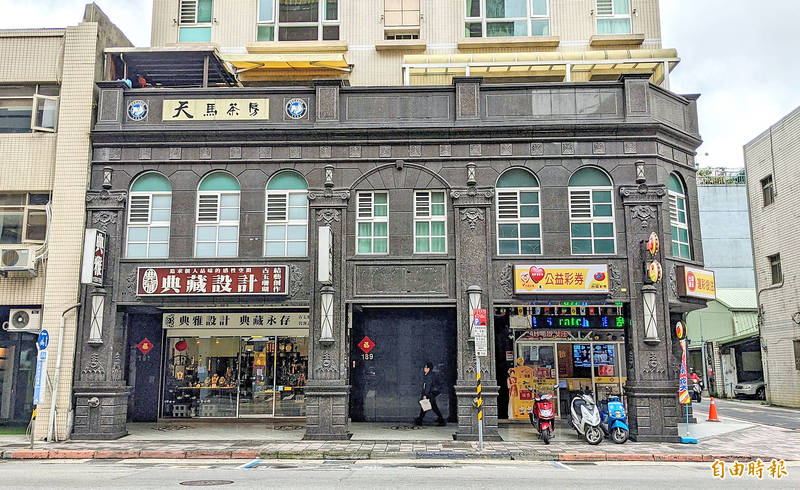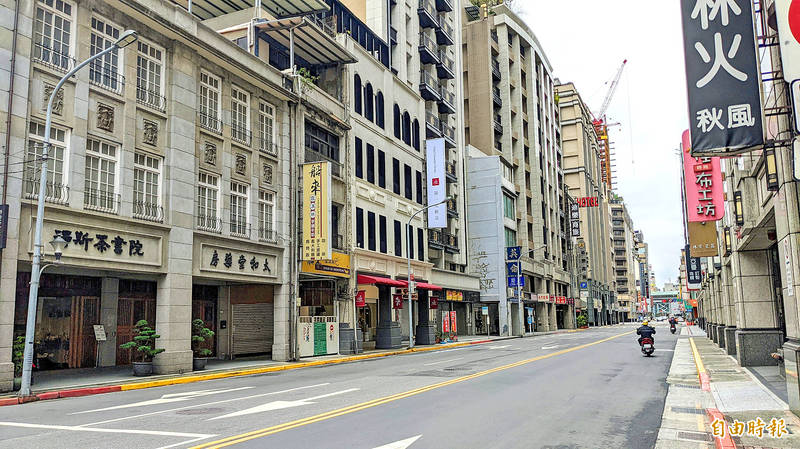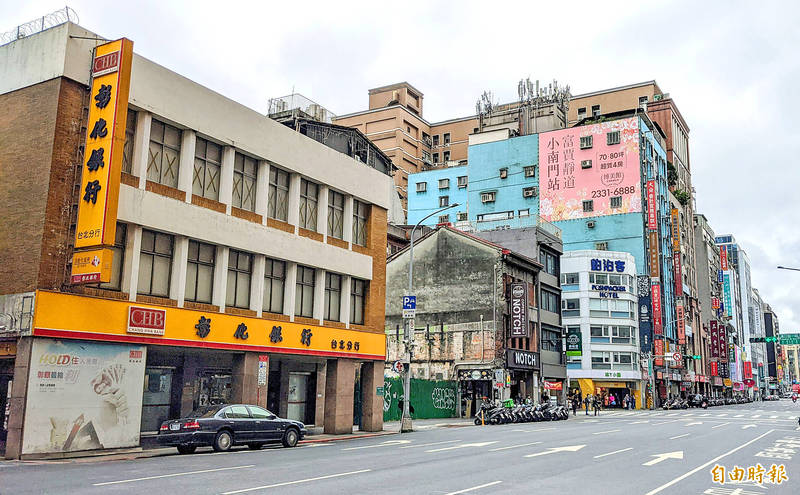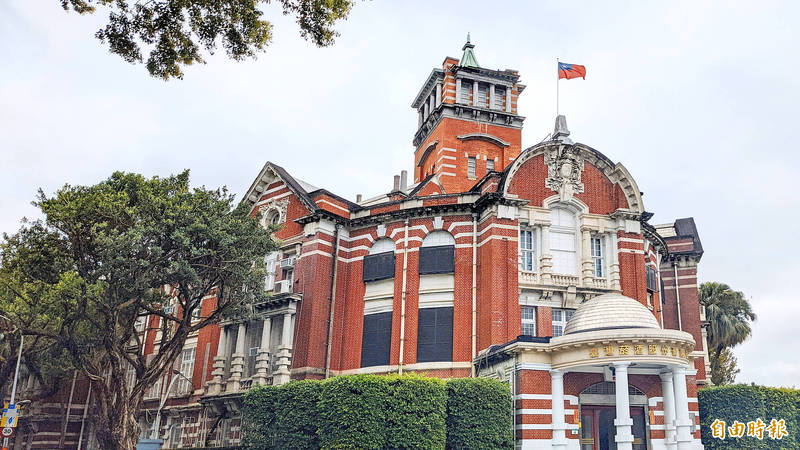《TAIPEI TIMES》 Tracing the footsteps of 228

This memorial wall to the victims of the 228 Incident can be found outside the Taipei 228 Memorial Museum. Photo: Han Cheung, Taipei Times
Follow the route that angry protesters took on Feb. 28, 1947 when they clashed with the police and military to experience further the history of the bloody incident
By Han Cheung / Staff reporter
Banging on drums and gongs, furious protesters marched south along Taipei’s Dihua Street (迪化街) in the morning of Feb. 28, 1947.
They turned east on Nanjing W Road (南京西路) until they reached Yanping N Road (延平北路), where the initial incident that triggered the demonstrations had happened a day earlier. Now an ordinary apartment building, 189 Nanjing W Road once housed the Tianma Tea House (天馬茶房), where police and Tobacco and Liquor Monopoly Bureau investigators struck an elderly woman selling contraband cigarettes and a bystander was accidentally shot and killed in the ensuing commotion.
This was the last straw after more than a year of Chinese Nationalist Party (KMT) misrule, and the people were determined to seek justice for what happened. Little did they know that it would lead to one of the bloodiest events in Taiwan’s modern history, the 228 Incident. The protests were brutally suppressed in the weeks to come, with thousands killed, and led to the White Terror.
Using information from the National 228 Memorial Museum’s (228國家紀念館) new exhibition, Scars on the Land (土地的傷痕), the Taipei Times put together this walking tour that traces the footsteps of the protesters on that fateful day.
SITES OF VIOLENCE
The original building of the Tianma Tea House was demolished in 2005, but a sign for the teahouse appeared on the new structure when cultural and historical workers reopened the shop on the third floor in 2011. A plaque indicating the “flash point of the 228 Incident” in Chinese and English can be found slightly to the east.
Built in 1930, the San Coffee (森高砂咖啡) building on the northeast corner of Nanjing and Yanping provides a glimpse of what Taipei looked like at that time. The protesters turned south here and marched down Yanping N Road — a few more historical buildings from that era can also be seen along the way.
Keep heading south until you see the Yanping branch of the Taipei Police Department on your right at Changan W Road (長安西路). This building has operated as a police station since 1931, and its director tried to stop the protesters when they passed by that morning. The crowd refused and smashed the station’s windows and other items inside before moving along.
As you cross Civic Blvd (市民大道), the iconic red North Gate and the imposing Taipei General Post Office (today’s Beimen Post Office) come into view. The protesters had moved to this area by the evening of Feb. 28 after failing to find anyone to answer to their demands, when they were sprayed by machine gun fire in front of the Chief Executive’s Office (today’s Executive Yuan).
The Taiwan Garrison Command subsequently declared temporary martial law in Taipei and dispatched soldiers and policemen to patrol the streets and shoot indiscriminately, but the people refused to disperse. Immediately to the right after Civic Blvd is the large red-brick Baroque-style building that housed the Taiwan Railways Administration. Thousands of people clashed with police and the military on the evening of Feb. 28 in front of the building and continued fighting throughout the next day.
George H. Kerr, then US vice-consul, describes the violence in his book Formosa Betrayed, noting that the protesters probably would have stormed the building until a military truck appeared and shot into the crowd, killing at least 25 and injuring hundreds.
The building today is part of the National Taiwan Museum’s Railway Department Park, which contains a number of historic structures and exhibitions that are also worth exploring.
THE MARCH CONTINUES
Continue walking down Yanping S Rd to find the Futai Street Mansion (撫台街洋樓), which was built in 1910. During the 228 Incident it was the office of the People’s News Leader (人民導報) newspaper, founded by Song Fei-ju (宋斐如), whose tragic tale was detailed in Sunday’s Taiwan in Time column. The paper was very critical of the government and closely reported on the incident and its aftermath until it was shut down on March 8.
Hang a left on Kaifeng Street (開封街) and turn right on Chongqing S Road (重慶南路), where the crowd continued their march south. Their first destination, the Taipei branch of the Tobacco and Liquor Monopoly Bureau, is immediately visible with its bright-yellow Chang Hwa Bank (彰化銀行) signage. Aside from the modern signage, it looks almost the same as it did when it was built in 1929.
When the protesters arrived, most of the staff had fled, including the officials they needed to talk to. They entered the building and removed numerous items from the office and burned them on the street before continuing south toward the bureau’s headquarters.
Stop by the 228 Peace Memorial Park along the way. Taipei 228 Memorial Hall (台北228紀念館) is situated here with permanent and special exhibitions about the incident. The building was a radio station at that time, which was used by both the government and people during the incident to broadcast their messages to the public.
If you don’t have time to go in, there’s a small memorial outside with a list of the victims and their photos, as well as a few large pamphlets detailing the situation in Taiwan before, during and after the incident in both Chinese and English.
Finally, continue south on Gongyuan Road (公園路) until you reach the Tobacco and Liquor Monopoly headquarters, which was guarded by military police by the time the crowd got there. Again, most of the staff and officials had fled, and the protesters smashed the bureau’s factory and staff dormitory in frustration.
You can end your tour here, or head north on Zhongshan S Road (中山南路) to the Executive Yuan, where hundreds of protesters then headed to air their grievances and were shot upon on arrival.
For an extensive description of the museum exhibition, visit: www.228.org.tw/en_exhibition-view.php?ID=9
新聞來源:TAIPEI TIMES

The former site of the Tianma Tea House on Nanjing W Road. The former site of the Tianma Tea House on Nanjing W Road. Photo: Han Cheung, Taipei Times

Protesters smashed the windows of the Yanping branch of the Taipei Police Department on their way to the Tobacco and Liquor Monopoly Bureau. Photo: Han Cheung, Taipei Times

Protesters marched down Yangping N Road with drums and gongs in the morning of Feb. 28, 1947. A few preserved buildings from that era can be seen on the left. Photo: Han Cheung, Taipei Times

Thousands of protesters remained near the North Gate in the evening of Feb. 28, 1947 and continued to clash with police and military over the next day. Photo: Han Cheung, Taipei Times

Chang Hwa Bank’s Taipei branch on Chongqing S Road was the first destination for the 228 Incident protesters as the former Taipei branch of the Tobacco and Liquor Monopoly Bureau. Photo: Han Cheung, Taipei Times

This map shows the route the protesters took on Feb. 28, 1947. Photo courtesy of National 228 Memorial Museum




















